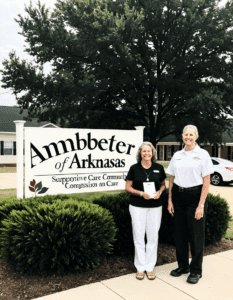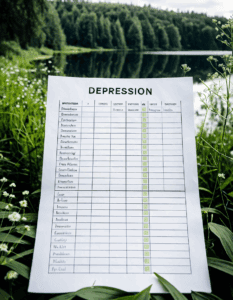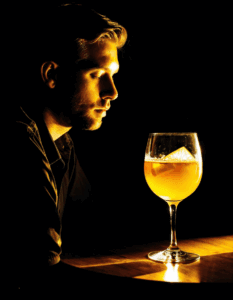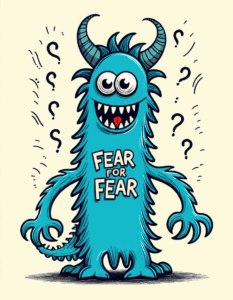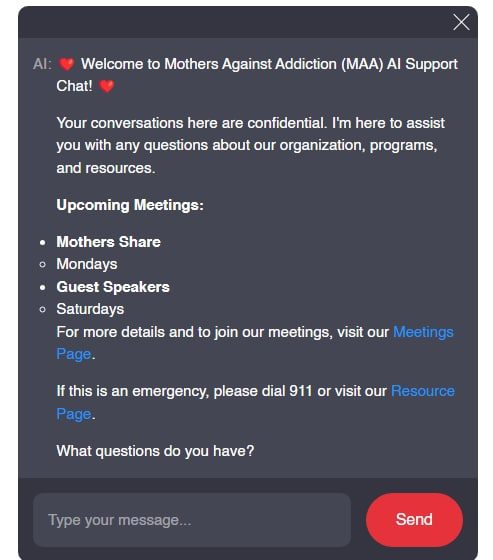The History and Evolution of 12-Step Programs
Understanding where 12-step programs come from can offer profound insights into their efficacy and evolution. Initially developed by Alcoholics Anonymous (AA) in 1935, the 12-step model has transcended its roots, now offering support for a myriad of addictions ranging from substance abuse to behavioral disorders. This legacy speaks to the adaptability and enduring relevance of the 12-step approach in fostering long-term recovery.
By expanding beyond alcohol addiction, the programs have illustrated a remarkable ability to adapt and meet the diverse needs of those struggling with various compulsions. Whether one is grappling with drugs, gambling, or other behavioral challenges, the underlying principles of the 12-step framework remain consistent. This broadening of scope highlights the robustness of the model and its enduring impact in the landscape of addiction recovery.
Key Principles of 12-Step Programs
12-step programs are structured around fundamental principles designed to guide individuals through their recovery journey. At the core, these principles emphasize acceptance, accountability, and spiritual growth, compelling participants to confront their addiction, make amends, and cultivate a more meaningful life. The anonymity aspect bolsters safety and confidentiality, making it conducive for personal reflection and peer support.
By creating a safe space for honesty and openness, anonymity ensures that participants can embark on their recovery with less fear of judgment. Besides, the spiritual component—while not strictly religious—urges individuals to look beyond themselves, fostering a sense of community and purpose. The intertwining of these elements contributes to the effectiveness of the 12-step programs, resonating deeply with those who seek solace and support.
Step-by-Step Unveiling: The Twelve Steps
Step 1: Admitting Powerlessness
The journey begins with the acknowledgment of powerlessness over addiction, a crucial step towards humility and honesty.
Step 2: Belief in a Higher Power
Finding faith, whether religious or secular, provides a foundation for hope and resilience.
Step 3: Decision to Turn Over Will
Committing to spiritual or moral guidance fosters accountability and redirects one’s life purpose.
Steps 4-7: Self-Reflection and Amends
Introspection through a moral inventory and confession to a higher power or another person.
Steps 8-9: Making Amends
Listing those harmed and making direct amends where possible, fostering emotional reconciliation.
Steps 10-12: Continued Growth
Ongoing personal inventory, spiritual practices, and sharing the journey with others solidifies recovery.
| Category | Details |
|---|---|
| Program Name | 12-Step Programs |
| Purpose | Mutual-help resource to support people in recovery from substance use disorders. |
| Reach | Widespread, available globally. |
| Core Concepts | – Acceptance of being “powerless over alcohol” |
| – Recognition of life becoming unmanageable due to substance use | |
| – Willingness to change attitudes and reactions to achieve a better life | |
| Steps Summary | 1. Admitting powerlessness over the addiction |
| 2. Belief in a higher power’s ability to restore sanity | |
| 3. Decision to turn one’s life over to the care of this higher power | |
| 4. Moral inventory of oneself | |
| 5. Admitting faults to self, the higher power, and another person | |
| 6. Ready to have the higher power remove these faults | |
| 7. Asking the higher power to remove shortcomings | |
| 8. Making a list of people harmed and being willing to make amends | |
| 9. Making amends to such people where possible, except when doing so would harm them or others | |
| 10. Continued personal inventory and admitting when wrong | |
| 11. Seeking to improve conscious contact with the higher power, through prayer and meditation | |
| 12. Carrying the message to others in need and practicing these principles in all affairs | |
| Support Framework | – Meetings |
| – Sponsor relationships | |
| – Literature | |
| – Online resources | |
| Benefits | – Providing structure in the recovery process |
| – Building a support network | |
| – Encouraging personal growth and accountability | |
| – Offering strategies to maintain long-term sobriety | |
| Typical Participants | – Individuals with substance use disorders |
| – Those seeking to overcome addiction | |
| – Family and friends of individuals in recovery | |
| Cost | Free, though donations are often encouraged at meetings |
| Historical Background | Founded in 1935 by Bill Wilson and Dr. Bob Smith, initially for alcoholism and now adapted for various substance use disorders |
| Organizations | – Alcoholics Anonymous (AA) |
| – Narcotics Anonymous (NA) | |
| – Cocaine Anonymous (CA) | |
| – Al-Anon (for family and friends of alcoholics) | |
| – Other groups addressing different specific addictions | |
| Controversies | Some criticism over religious aspects and effectiveness for everyone |
| Footnotes | Based on traditional 12-Step principles; variations exist for different types of addictions and personal beliefs |
Real-Life Examples of Successful 12-Step Programs
Alcoholics Anonymous (AA)
Alcoholics Anonymous (AA) is the pioneer of 12-step programs and remains crucial in supporting millions of alcoholics through its structured approach, fellowship, and commitment to anonymity and mutual aid. AA groups meet regularly across the globe, providing a safe haven for those battling alcoholism. This structured yet compassionate model has inspired numerous other 12-step groups, affirming its global significance in addiction recovery.
Narcotics Anonymous (NA)
Narcotics Anonymous (NA) specializes in supporting individuals recovering from drug addiction, adapting the 12-step methodology to address drug-specific challenges with an inclusive, non-judgmental community. NA meetings offer a serene space where individuals can share their struggles and triumphs, fostering an environment of mutual support and lifelong recovery. It’s no wonder that NA continues to grow, providing indispensable aid to those battling various drug addictions.
Al-Anon and Alateen
These programs offer support for friends and family members affected by another’s alcoholism. They emphasize well-being and foster a community for shared experiences. Al-Anon and Alateen recognize that addiction impacts more than just the individual; it affects the whole family. By focusing on the health and sanity of loved ones, these groups play a critical role in the overall recovery ecosystem.
Beyond Substance: Mark of 12-Step Programs in Behavioral Addictions
Tackling newer domains like food, gambling, and internet addiction, programs such as Overeaters Anonymous (OA) and Gamblers Anonymous (GA) have demonstrated the model’s flexibility and broad applicability, proving its extensive efficacy. These expansions highlight the versatility of the 12-step model, addressing the unique needs of individuals struggling with behavioral addictions.
Overeaters Anonymous, for instance, helps individuals reframe their relationship with food, promoting healthy eating habits and emotional wellness. Similarly, Gamblers Anonymous offers a support network for those facing gambling addiction, focusing on changing compulsive behaviors and fostering a balanced, productive life. These examples underscore the 12-step programs’ capability to tailor their approach to various types of addiction.
Comparative Analysis: 12-Step Programs vs. Alternative Therapies
Individual Therapy
While highly personalized, one-on-one counseling can lack the communal support that 12-step groups offer, which is essential for shared experiences and collective wisdom. Individual therapy, like Cognitive-behavioral Therapy ( Cbt ), provides a unique space for tailored intervention, but it often misses the community aspect that many find invaluable in 12-step programs.
Medication-Assisted Treatment (MAT)
Programs like Medication-Assisted Treatment (MAT) can stabilize biological factors but often lack the comprehensive psychological and spiritual pathway that the 12 steps provide. MAT is beneficial for those requiring medical intervention to manage withdrawal symptoms, yet it complements rather than replaces the holistic recovery mechanism provided by 12-step programs.
Incorporating Modern Therapies into 12-Steps
Emerging trends illustrate the blend of cognitive-behavioral therapy (CBT) with traditional 12-step practices to enhance efficacy, providing both structured peer support and tailored psychological intervention. By integrating CBT into 12-step meetings, individuals benefit from structured, evidence-based psychological support while still engaging in the rich, communal fabric of 12-step groups.
Personal Narratives: From Struggles to Success Stories
Real-life testimonies deeply underscore the transformative power of 12-step programs. Stories like that of acclaimed actor Robert Downey Jr.’s journey through the ranks of AA to revitalize his life from the depths of substance abuse provide powerful, relatable proof of the program’s potential. Such narratives highlight the resilience and determination that 12-step programs can inspire, compelling others to embark on their recovery journey.
Countless others, from ordinary individuals to celebrities, testify to the profound impact of these programs. Their journeys reinforce the message that recovery is possible, no matter how deep one has sunk into addiction. The transformative power of 12-step programs lies in their ability to create a pathway where there once seemed only darkness.
Tailoring 12-Step Programs for Diverse Populations
Addressing cultural sensitivities and language barriers in 12-step programs enhances accessibility. Groups like Black Narcotics Anonymous and Latino Alcoholics Anonymous exemplify this customization, ensuring culturally relevant support mechanisms. These groups understand that recovery is not one-size-fits-all and adapt their approaches to better serve the unique needs of diverse communities.
By creating culturally sensitive and inclusive environments, these tailored programs ensure that everyone has access to the support they need. This adaptability is crucial for breaking down barriers and fostering a sense of belonging for all participants, regardless of their background.
A Continuing Journey of Hope and Healing
The merit of 12-step programs lies not just in their longstanding history or structured steps but in their transformative power to reshape lives and rebuild hope. By integrating spiritual growth, community support, and personal accountability, these programs offer a holistic approach to recovery that stands resilient against the test of time. For anyone touched by addiction, 12-step programs provide a well-trodden path towards a brighter, more fulfilling future.
For parents of children struggling with addiction or those who have lost a child to addiction, MothersAgainstAddiction.org provides a beacon of hope and a strong support network. By leaning on the principles of 12-step programs and combining them with modern interventions, we pave the path for a more promising tomorrow. While the journey may be challenging, it’s a road lined with empathy, strength, and unwavering support.
For those seeking more information about addiction treatment options, please visit Addiction treatment Options to explore various pathways to recovery. Additionally, our resources on How can I help My drug-addicted son and relapse prevention offer valuable guidance and support for navigating the journey of recovery.
Your Path to Recovery: 12-Step Programs
12-step programs are an intriguing blend of structured guidance and personal growth, providing a clear path for those facing addiction. But did you know these programs have an interesting history and some unexpected connections?
The Origins and Evolution
The concept of 12-step programs began with Alcoholics Anonymous in 1935. Curiously, the founders, Bill Wilson and Dr. Bob Smith, developed the steps not in a clinical setting but rather through a process of trial and error with fellow alcoholics. This organic approach, much like reading through the unexpected twists in the Bocchi The Rock Manga, highlights the evolving nature of human experiences and learning.
Little-Known Trivia
Fast forward to today, and you’d be surprised at how extensive the influence of 12-step programs has become. They’re found in various groups beyond alcohol addiction, addressing issues from overeating to gambling. In fact, the principles have even crept into corporate self-help strategies and wellness workshops, somewhat akin to how the latest trends in Maryland Resorts offer retreats aimed at mental recharge.
Fun Facts on 12-Step Programs
On a lighter note, ever wondered about how popular culture intersects with these programs? Just like surprising tidbits you might stumble upon about a celebrity’s past, such as the story behind Kelce’s ex-girlfriend, 12-step programs have been referenced in numerous films, books, and TV shows, signifying their deep cultural penetration.
So, whether considering the origins or spotting their subtle influences in daily life, 12-step programs aren’t just a recovery pathway; they’re a fascinating part of our social fabric, much like understanding what is the current mortgage interest rate. Each step you take in the program isn’t a mere instruction; it’s a piece of a larger, richly woven tapestry of human resilience and transformation.

What is the 12-step program?
The 12-step program is a mutual-help resource designed to support people in recovery from substance use disorders. It’s structured around a series of steps that guide individuals towards achieving and maintaining abstinence from substances.
What is the basic concept of a 12-step program?
The basic concept of a 12-step program involves admitting that one is powerless over their addiction, acknowledging that their life has become unmanageable, and committing to making changes in their attitudes and reactions to achieve better control over their life.
What are the 12 Steps for AA?
The 12 Steps for AA include admitting powerlessness over alcohol, believing in a higher power, making a decision to turn one’s will to a higher power, taking a moral inventory, admitting wrongs, being ready for a higher power to remove defects, asking for removal of shortcomings, making amends, continuing inventory, seeking improvement through prayer and meditation, and carrying the message to others.
What kinds of 12-step programs are there?
There are 12-step programs for a variety of addictions and compulsions, including Alcoholics Anonymous (AA), Narcotics Anonymous (NA), Gamblers Anonymous (GA), Overeaters Anonymous (OA), and many others tailored to specific issues.
How long does it take to complete 12-step program?
The time it takes to complete a 12-step program varies for each person. It’s not a linear process and doesn’t have a set end date. Some people may go through the steps multiple times as part of their ongoing recovery.
Who benefits from a 12-step program?
Anyone struggling with substance use disorders or addictive behaviors can benefit from a 12-step program. It provides a structured path to recovery, along with support from others who have similar experiences.
What are the disadvantages of the 12-step program?
Disadvantages of the 12-step program can include its emphasis on spirituality or a higher power, which might not align with everyone’s personal beliefs. Additionally, the program’s structure and open sharing may not suit individuals who prefer a more private or different approach to recovery.
What is the primary purpose 12-step?
The primary purpose of the 12-step program is to help members stop their addictive behaviors and support each other in achieving and maintaining lifelong sobriety.
What is the success rate of the 12-step program?
Success rates for the 12-step program vary. While some find it life-saving and effective, others may not find it as helpful. Individual commitment and the extent of support play major roles in success.
What are the hardest steps in AA?
Many people find Step 4 (taking a moral inventory) and Step 9 (making amends) particularly challenging due to the introspection and the requirement to address past wrongs.
How do you start a 12 step program?
Starting a 12-step program typically involves attending a meeting, finding a sponsor, and beginning to work through the steps with the support of the group.
How long does alcohol detox last?
Alcohol detox can last anywhere from a few days to a week or more, depending on the individual’s health, the severity of their alcohol dependence, and other factors.
What religion is the 12 step program?
The 12-step program isn’t affiliated with any specific religion but does emphasize belief in a higher power. Participants can interpret this in a way that fits their personal faith or understanding.
What are the stages of sobriety?
Sobriety stages generally include early sobriety (detox and initial recovery), middle sobriety (maintaining behavioral changes), and long-term sobriety (sustaining a sober lifestyle).
What is the oldest and most successful 12 step program?
Alcoholics Anonymous (AA) is the oldest and has become one of the most successful 12-step programs since its founding in 1935.
What are the 12 principles of the step?
The 12 principles of the steps include honesty, hope, faith, courage, integrity, willingness, humility, love, responsibility, discipline, awareness, and service.
What is the purpose of the step 12?
Step 12 focuses on carrying the message of recovery to others who are still suffering and practicing these principles in all areas of one’s life.
What is the primary purpose 12-step?
The primary purpose of the 12-step program is to help members stay sober and support each other through the recovery process.
What is the 12 Steps of AA Step 10?
Step 10 of AA involves taking a continuing personal inventory and promptly admitting when wrong. It’s about ongoing self-reflection and correction.





